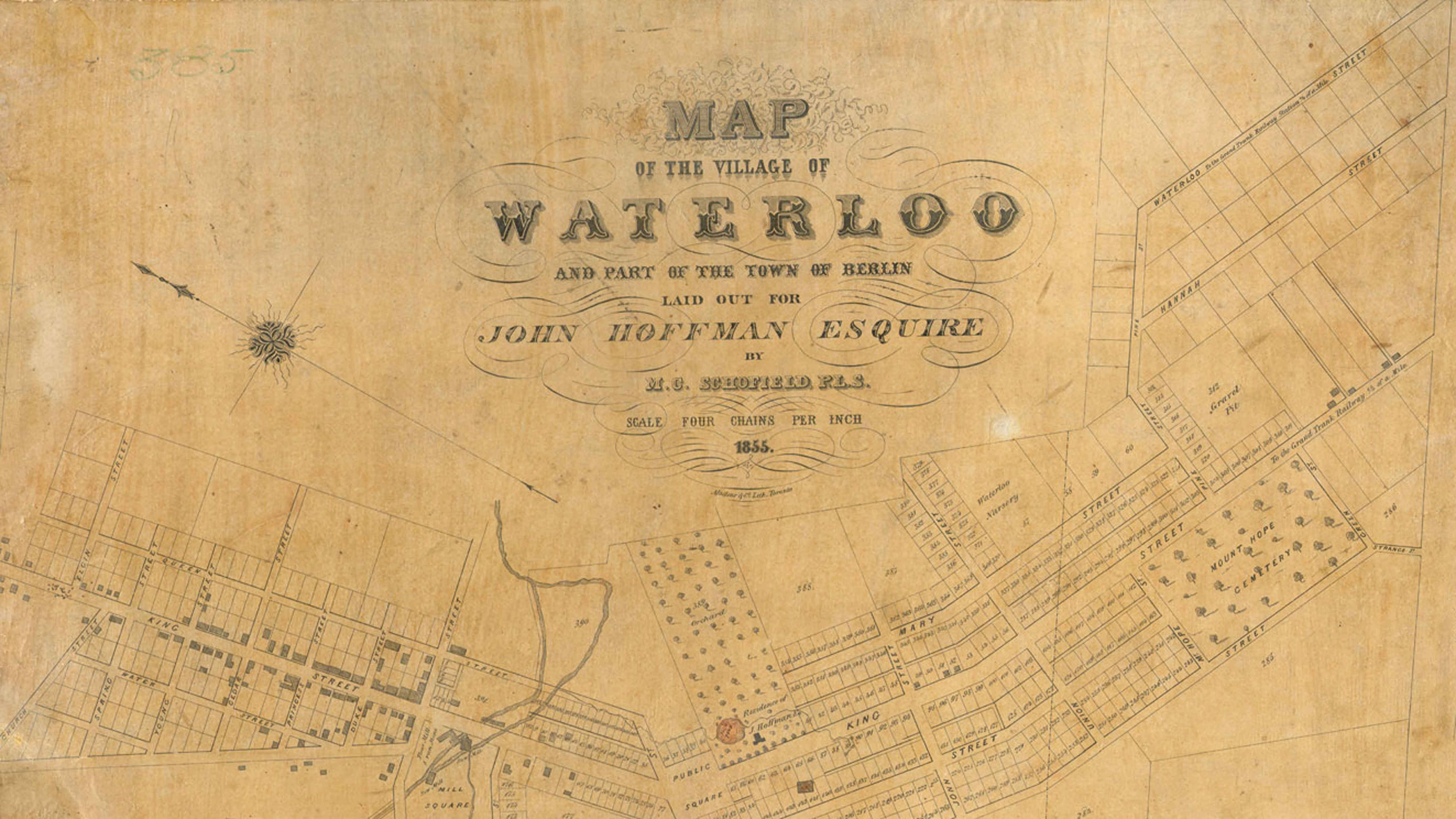Duncan, Linton LLP is the oldest independent law firm in Waterloo Region and is one of the oldest law firms in all of Ontario. The firm’s history dates back to 1860 – when Ontario was still “Canada West”, Kitchener was still “Berlin”, and the City of Waterloo was just a small village.
This year marks Duncan, Linton LLP’s 160th anniversary of serving Waterloo Region. In celebration of this anniversary (and because current circumstances have made any other form of celebration in 2020 impractical), the firm will be publishing a series of blog posts which spotlight the biography of partners of the firm who were leaders in Waterloo Region’s business, legal, and political life. Our first installment will focus on Frederick Colquhoun.
Frederick Colquhoun
Frederick Colquhoun was born on August 31, 1839 in Sterling, Scotland. His father, James Colquhoun, was a Barrister of the Middle Temple, and by all accounts a brilliant lawyer. In 1842, the Colquhouns immigrated to Canada, originally settling in Ayr.
After initially establishing a law practice in Galt, and speculating in land near Ayr, James Colquhoun and his family moved to Berlin (now Kitchener) in or around 1852. Shortly after moving to Berlin, he was made Deputy Clerk of the Crown, in addition to being appointed Clerk of the County Court, a position he held until his death in 1877. A keen interest in education also led James to serve at various times as trustee or chairman on both the public and high school boards.
James Colquhoun’s impact on Waterloo Region is perhaps best reflected in his construction of the house known as “Woodside”. John King, a family friend, rented Woodside from 1886 to 1893, and Woodside is best known today as the boyhood home of Canadian Prime Minister William Lyon MacKenzie King. Reflecting later in his life, Mackenzie King stated “the years that left the most abiding of all impressions and most in the way of family associations were those lived at Woodside”.
Frederick Colquhoun would go on to follow his father into the legal profession, opening his legal practice with partner F. Stewart MacGachen in 1860. Records suggest that at some point, Colquhoun and MacGachen’s offices were located in the prestigious Devitt Block. Built in 1870 by Benjamin Devitt and Daniel Snyder and demolished in 1976, the Devitt Block was located in the parking lot behind what is now the Bank of Montreal at 3 King Street South in uptown Waterloo.

Advertisement included in the Gazetteer and Directory of the County of Waterloo in 1867.

Photograph of a colour drawing of the building at Erb Street West and King Street, commonly called the Devitt Block.
Colquhoun and MacGachen’s partnership lasted approximately fifteen years, with MacGachen being appointed as a solicitor for the Waterloo Mutual Fire Insurance Company. In 1876, Colquhoun entered into a partnership with Ward Hamilton Bowlby and Edwin Perry Clement, under the name Bowlby, Clement and Colquhoun, but remained for only a short period.
After conducting business alone for several years afterwards, Colquhoun would eventually enter into a partnership with Arthur B. McBride in 1889, under the name Colquhoun & McBride. This partnership lasted until 1897, when Colquhoun was appointed Collector of Customs at the port of Berlin, a position he held until his death in 1906.
Throughout his career, Colquhoun was a leader in Waterloo’s business, legal, and political life. Starting in 1868, Colquhoun served as Village Clerk of Waterloo until it was incorporated in 1876, following which he served as Clerk and Treasurer of the Town of Waterloo until 1898. Colquhoun also served as secretary of the North Waterloo Reform Association and Children’s Aid Society for a number of years, was an original member of the Board of Directors of the Dominion Life Assurance Co., and was President of the Berlin and Waterloo Hospital Trust.

An excerpt of the Kitchener-Waterloo Record’s “Cityhood” Edition, dated January 2, 1948, which commemorated the Incorporation of the City of Waterloo, details Frederick Colquhoun’s service to the Village and Town of Waterloo.
Like his father, Frederick Colquhoun’s legacy in Waterloo Region is also found in local architecture. In or around 1870, Colquhoun purchased several lots in the Hoffman Survey (an image of which is used as the main image for this post), at King and Union streets. After his marriage to Lidella Gibson in 1884, Colquhoun constructed a large, impressive red brick home on the extensive property that was tastefully landscaped with ornamental trees and shrubs. At the time of construction, Mary Street was just a laneway giving a rear entrance to the home and accompanying stable. When he died in 1906 the home and land was sold to H. E. Ratz. In 1925, Lincoln Stroh purchased the property, subdivided it, and erected five homes. The original home was afterwards referred to by locals as the “Backwards Home”, because the front, facing King Street, was obscured by the infilling homes.
The Colquhoun names lives on at the firm. One of our boardrooms bears his name and displays deeds he prepared, while his Ontario Reports dating back to 1882 are on display in another boardroom.
For 160 years, and through several name changes, our firm’s focus has been to provide sound legal advice, supported by prompt, effective and responsive service to our clients. Duncan, Linton LLP truly has a history of excellence and a reputation for excellent legal services. The loyalty of our clients is the firm’s proudest asset. To contact a member of our team of experienced lawyers, call us at (519) 886-3340 or contact us online.
Duncan, Linton LLP wishes to thank the Waterloo Historical Society, the Waterloo Public Library, Explore Waterloo Region, the University of Waterloo Library Special Collections, and Waterloo Region Generations whose online and archival content was of great assistance in drafting this post.

